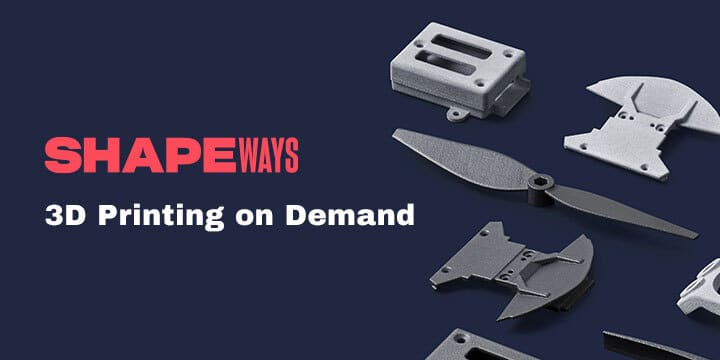As the first official move after going public in the NYSE, Shapeways (NYSE: SHPW) is introducing Otto Software-as-a-Service (SaaS), a tailormade platform for traditional manufacturers seeking a flexible path to 3D printing for industrial-grade production. With Otto, manufacturers can benefit from free access to fully digitized end-to-end 3D printing workflows that reduce unnecessary risk and costs.
“Our goal with Otto software is to make it incredibly easy and fast for any manufacturer anywhere to benefit from 3D printing,” said Greg Kress, CEO of Shapeways. “Enabling seamless access to world-class digital manufacturing removes the required CapEx and hassles of setting up dedicated production capabilities. Manufacturers can sign up for Otto free of charge and start using our services right away.”
Digital designs into physical products
Traditional manufacturing is focused on mass production, typically driven by manual and cumbersome processes that do not adapt easily or cost-effectively to changing customer demands or market dynamics. Using Otto, manufacturers can respond with speed and agility by taking full advantage of 3D printing to produce high-quality, low-volume, complex parts and products. Otto is ideally suited for a diverse customer base, including individual engineers, small businesses, large enterprises and global manufacturers across a variety of markets with rigorous applications requiring high levels of customization, such as aerospace, automotive, healthcare and industrial.

Manufacturing on Demand
Otto, via a Software-as-a-Service offer, will expedite each 3D printing phase without requiring major capital expenditures or different software tools to navigate the end-to-end journey. Otto’s intuitive front-end simplifies initial digital file uploads, product configurations, file analysis and optimization with instant auto-correction for trouble-free manufacturability. Otto software also will ensure supply chain readiness with access to Shapeways’ supply chain network of more than 50 manufacturing partners, 11 vendor-agnostic printing technologies as well as over 90 materials and finishes. Complex manufacturing with complete traceability is enhanced by pre- and post-production capabilities that can deliver quality, finished products to more than 160 countries.
A need for end-to-end software
According to Shapeways’ “State of 3D Printing” survey, commissioned in July, 88% of those polled face challenges with their 3D printing software and applications. Of those surveyed, 72% use six or more tools or applications to manage all the manufacturing steps needed to make a typical product. The three tools used most frequently are shared data repositories (e.g., SharePoint or Google Docs), Excel or standalone documents, and machine scheduling tools. Only 29% of the respondents reported the use of applications with integrated and cohesive workflow management.
In citing the top three challenges with current 3D printing applications, survey respondents identified the manual effort required to move between tools (48%), the high cost of purchasing and maintaining all needed software (47%) and inconsistent interfaces that increase learning curves (40%). The majority of survey participants (88%) agree better software would accelerate their adoption of 3D printing.
The top five software capabilities respondents believe would deliver the greatest benefits include real-time tracking and traceability, having a single interface to manage internal workflows and external supply chain, the ability to attain data needed for industry-specific certifications, vendor-agnostic hardware or materials, single view into the end-to-end manufacturing process
With Otto, Shapeways will offer Software-as-a-Service functionality in an integrated platform designed to scale innovation with ease. The ordering capability is available now, which supports seamless digital file uploads, part configurations, instant price quotes and access to a digital inventory of materials, finishes and technologies. Additionally, DSM, Henkel and BASF are accelerating their shift to digital manufacturing through Otto. Traditional manufacturers also can leverage the strength of Otto by deploying it as a white-label solution to expand current production capabilities with the addition of on-demand 3D printing.
* This article is reprinted from 3D Printing Media Network. If you are involved in infringement, please contact us to delete it.
Author: Davide Sher

Leave A Comment